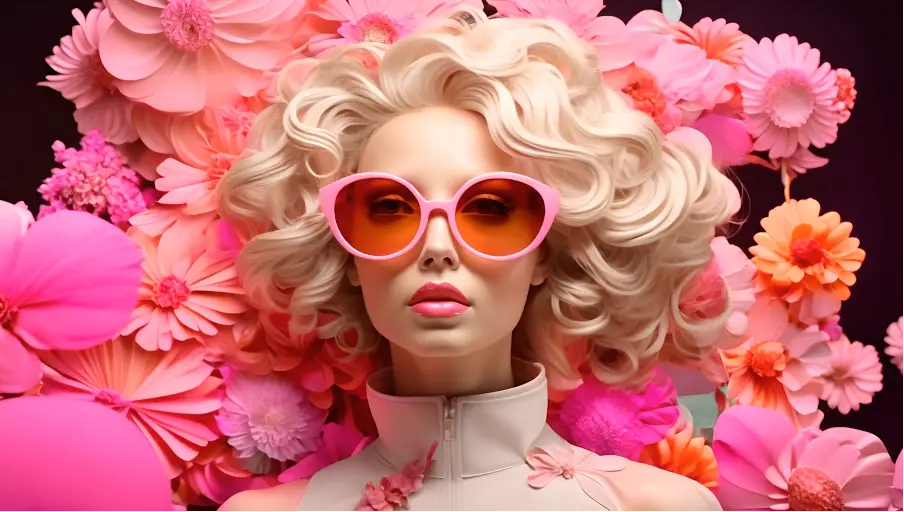The standardisation of beauty refers to the narrow and often unrealistic ideals of physical appearance that have become increasingly prevalent across the globe. This phenomenon is largely fueled by the media, advertising, and the cosmetic surgery industry, as well as social media platforms where filters and photo editing tools can create and perpetuate unattainable standards. This standards create a one-size-fits all model that completely defies our natural diverse beauty that makes us so uniquely beautiful.
The Impact of Unrealistic Beauty Standards
In this forever ‘getting-smaller’ world, driven by social media trends, expectations of what beauty should look like is becoming as dangerous as ever. It is our collective role to minimise this dangerous impact on our selves and our future generations:
Mental Health Risks
The pursuit of a standardised ideal of beauty can lead to significant psychological distress, including body dysmorphic disorder, low self-esteem, and eating disorders. The constant exposure to idealised images can make individuals feel inadequate and dissatisfied with their own appearances. This problem is very deep as the world becomes smaller through social media, and as children and teens access these media outlets much earlier in age than previous generations.
Physical Health Risks
In an attempt to conform to these ideals, individuals may resort to extreme diets, excessive exercise, or cosmetic procedures that carry health risks. The rise in cosmetic surgery, for example, comes with risks of complications, infections, and long-term health problems. This risk should not just be mitigated, it should be eradicated completely, and replaced with the promotion of healthy beauty.
Cultural Homogenisation
The standardisation of beauty also contributes to the erasure of cultural diversity. Beauty practices and ideals that vary widely across different cultures are being overshadowed by a singular, often Western-centric beauty ideal. This not only diminishes cultural heritage but also pressures individuals to conform to a narrow concept of beauty.
Social Media’s Role
Platforms like Instagram and TikTok play a significant role in perpetuating standardised beauty norms. Filters and editing tools that can alter one’s appearance to meet these ideals are widely used, creating a cycle of comparison and dissatisfaction. Influencers and celebrities often showcase these idealised images, further reinforcing the standards.
Combating Standardised Beauty Ideals
I truly believe that it is the responsibility of each of us to fight for the freedom of beauty identification. We need to work alone and together the change the narrative and remove definitions on the concept of beauty. Below are few thoughts on this advocacy, as we start seeing the fight to free from standardisation take place:
Promoting Diversity
One way to counteract the standardisation of beauty is by promoting and celebrating diversity in all forms of media. This includes showcasing a wide range of body types, skin tones, ages, and cultural backgrounds. Here in London, we have been seeing diversity take on the show on advertisement, catalogues, shop windows, and even runways.
Education and Awareness
Raising awareness about the impact of unrealistic beauty standards on mental and physical health is crucial. Educational campaigns can help individuals recognize and critically evaluate the media they consume. This push of awareness should start from the media outlets who enforced the standardising of beauty in the first place. This awareness should reach the youth by educating them about media literacy and the realities behind the images they see online. This way we can empower them to develop a healthier relationship with their own body image. Schools, parents, and community programs play a vital role in providing this education and fostering a more inclusive and realistic understanding of beauty.
Supporting Mental Health
Providing resources and support for individuals struggling with body image issues or the psychological effects of pursuing unrealistic beauty standards is essential. This support should start as early as possible, with schools providing the required support for teens as they start discovering their bodies and link it to attractiveness.
Encouraging Authentic Representation
Encouraging social media users, influencers, and brands to present more authentic and unedited images can help shift the narrative and reduce the pressure to conform to standardized ideals. Lately, we have been seeing celebrities facing the public without makeup, hair dye, with cellulite and wrinkles. This helps embrace self-love and self-acceptance, including aging naturally, being proud of birth marks, scars, and everything else that makes us our authentic self without striving for ‘fake-ness’ to fit in.
Conclusion
The trend towards the standardisation of beauty is a complex issue that requires a multifaceted approach to address. By promoting diversity, fostering critical media literacy, and supporting mental health, society can begin to move away from harmful beauty standards and towards a more inclusive and healthy understanding of beauty. The future of beauty might be vague based on the current trends, however, as artificial intelligence creeps in every dimension of our lives, can it solve the problem of beauty standardisation faster? Find out in our next article.

